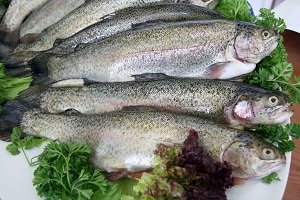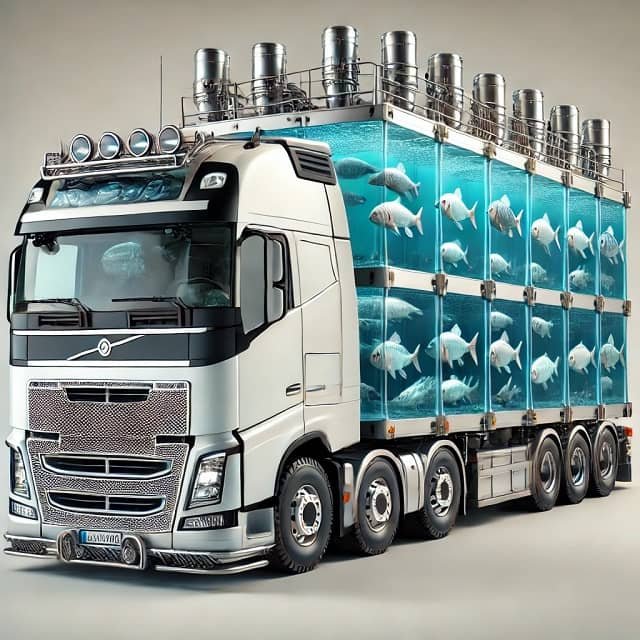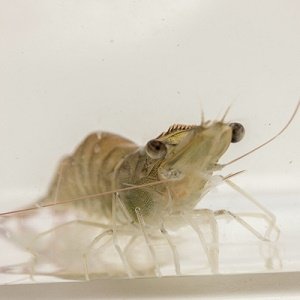
Sous-vide (vacuum cooking), a method that involves vacuum-sealing food in airtight bags and cooking it at low, precise temperatures for extended periods, has become increasingly popular in recent years. While celebrated for producing incredibly tender and flavorful textures, the science behind its magic has remained somewhat mysterious, particularly regarding fish.
A recent study published in MDPI by scientists from The University of Tokyo aimed to shed light on the underlying mechanisms of tenderizing rainbow trout through sous-vide cooking.
The Science Behind Sous-Vide
At the heart of sous-vide’s magic lies a delicate balance between heat and protein chemistry. A key factor contributing to the tender and flaky texture of sous-vide fish is the controlled denaturation of actin, a protein essential for muscle structure. By cooking at temperatures below actin’s denaturation point, the protein remains relatively intact, resulting in a softer, juicier product.
The denaturation temperature of actin in Atlantic salmon and rainbow trout, commonly used in sous-vide cooking, is approximately 78°C. Cooking fish below this threshold prevents actin denaturation, leading to a softer texture.
The Role of Proteolysis
While heat plays a critical role in sous-vide cooking, it is not the sole factor influencing texture. Proteolysis, the breakdown of proteins by enzymes known as proteases, also contributes to the tender texture. In fish, these proteases activate within specific temperature ranges. Sous-vide cooking, by maintaining precise temperatures, can optimize enzyme activity, resulting in a more tender and flavorful outcome.
A Closer Look at Protein Breakdown
Previous research on sous-vide tenderizing focused mainly on the role of heat in protein denaturation, a process that alters their structure and affects texture. However, recent studies suggest that proteases, enzymes that break down proteins, may play a significant role, especially at the low temperatures characteristic of sous-vide cooking.
This new study delves into this intriguing phenomenon, examining the specific changes occurring in rainbow trout during sous-vide cooking. By employing advanced techniques such as SDS-PAGE/immunoblot and peptidomic analysis, researchers gained valuable insights into the complex interplay between heat and proteolytic activity.
Key Findings
- Reduction in Protein Aggregation: Sous-vide cooking significantly reduces sarcoplasmic protein aggregation, a class of proteins found in muscle tissue. This reduction contributes to the tender and flaky texture associated with sous-vide fish.
- Enhanced Actin Depolymerization: Actin, a primary component of muscle fibers, undergoes depolymerization during sous-vide cooking, further improving tenderness by altering muscle structure.
- Accelerated Proteolysis: The researchers observed accelerated proteolysis of myofibrillar proteins, which form muscle fibers. This protein breakdown is facilitated by the activation of specific proteases at different cooking temperatures.
- Temperature-Dependent Protease Activity: The study identified proteases that activate at higher sous-vide cooking temperatures. These enzymes contribute to the final texture and flavor profile of cooked fish.
Implications for the Fish Processing Industry
The findings of this study have significant implications for the food industry, particularly for those involved in producing sous-vide products. Understanding the mechanisms underlying the tenderizing process allows manufacturers to optimize cooking conditions to achieve desired texture and quality. This could lead to greater consumer satisfaction and increased demand for sous-vide products.
Stay Always Informed
Join our communities to instantly receive the most important news, reports, and analysis from the aquaculture industry.
Additionally, by unraveling the intricate mechanisms of sous-vide cooking, researchers and chefs can gain valuable insights to refine cooking conditions for different fish species. This knowledge may lead to innovative techniques that further enhance the texture, flavor, and nutritional value of sous-vide fish products.
Conclusion
The study provides valuable insights into rainbow trout tenderization through sous-vide cooking. The findings highlight the importance of proteases under low-temperature cooking conditions and the temperature dependence of the tenderizing process.
Key Takeaways:
- Proteolysis of myofibrillar proteins accelerates during sous-vide cooking, with specific proteases activating at different cooking temperatures.
- Temperature-dependent myofibrillar proteolysis is observed in rainbow trout meat during sous-vide cooking.
- Partial dissociation of F-actin occurs during cooking at 52°C or 60°C.
- Inducing partial dissociation and proteolysis of myofibrillar proteins helps prevent the toughening of rainbow trout meat during sous-vide cooking at lower temperatures.
The methodology employed in this study has the potential to inform the optimization of cooking conditions for various fish species, leading to improved texture and quality of sous-vide products.
The study was funded by the TOBE MAKI Foundation and partially supported by Grants-in-Aid for Transformative Research from the Japan Society for the Promotion of Science.
Reference (open access)
Sakuyama, M., Kominami, Y., & Ushio, H. (2024). Peptidomic Analysis Reveals Temperature-Dependent Proteolysis in Rainbow Trout (Oncorhynchus mykiss) Meat During Sous-Vide Cooking. Proteomes, 12(4), 36. https://doi.org/10.3390/proteomes12040036
Editor at the digital magazine AquaHoy. He holds a degree in Aquaculture Biology from the National University of Santa (UNS) and a Master’s degree in Science and Innovation Management from the Polytechnic University of Valencia, with postgraduate diplomas in Business Innovation and Innovation Management. He possesses extensive experience in the aquaculture and fisheries sector, having led the Fisheries Innovation Unit of the National Program for Innovation in Fisheries and Aquaculture (PNIPA). He has served as a senior consultant in technology watch, an innovation project formulator and advisor, and a lecturer at UNS. He is a member of the Peruvian College of Biologists and was recognized by the World Aquaculture Society (WAS) in 2016 for his contribution to aquaculture.




